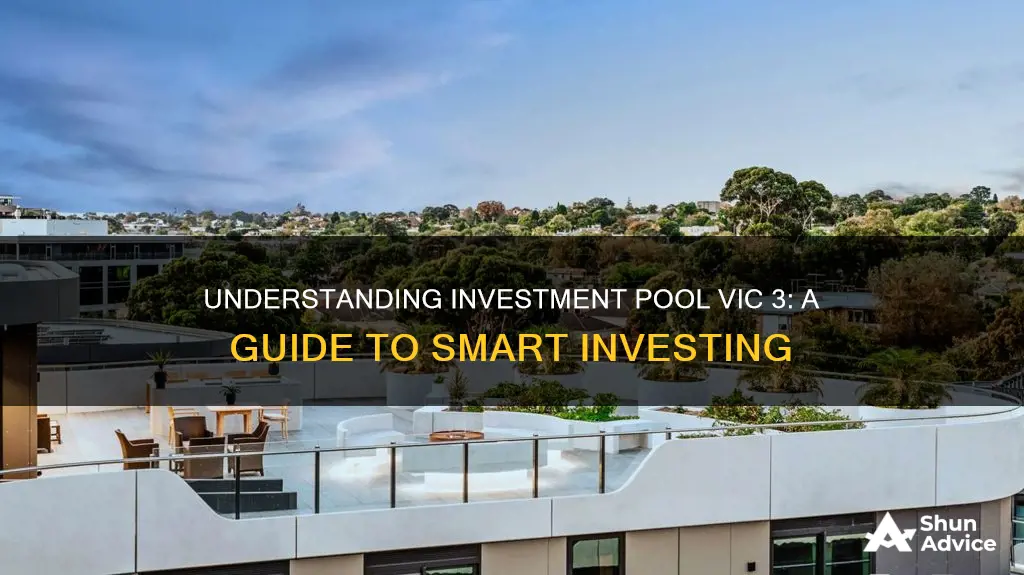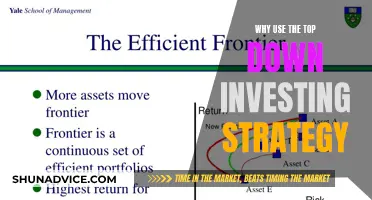
The Investment Pool in Victoria 3 is a fund that certain Pop Types with ownership shares in buildings pay into, which can then be used for construction. The types of buildings that can be constructed using the Investment Pool depend on the player's economic laws. For example, under Interventionism, the Investment Pool can be used to construct mines and agricultural buildings. The construction queue is split into Private and Government constructions, with the former being built by Pops themselves and the latter by the player or country-level AI. Players can choose to disable Autonomous Investment, which puts the Investment Pool into the hands of the player.
| Characteristics | Values |
|---|---|
| What is the Investment Pool? | A pool of funds that can be used for construction. |
| Who contributes to the Investment Pool? | Certain Pop Types with ownership shares in buildings pay part of their dividends into the Investment Pool. |
| How much do Pop Types contribute? | Capitalists (20%), Aristocrats (10%), Farmers (5%), and Shopkeepers (5%). |
| How does the Investment Pool get used? | With Autonomous Investment enabled, the Construction Queue is split into Private and Government Constructions. Private Constructions are built using the Investment Pool and cannot be reprioritized or canceled. |
| What types of buildings can be built with the Investment Pool? | Depends on your economic laws. For example, under Interventionism, the Investment Pool can be used for mines and agricultural buildings. |
| How do I know if the Investment Pool is being used? | Hover over the pool to see if money is being withdrawn. |
| What if I don't want to use Autonomous Investment? | You can disable it and manage the Investment Pool manually as a Game Rule. |
What You'll Learn

The investment pool is a safety net
In Victoria 3, there is no lump-sum cost for expenses such as construction. Instead, the game keeps track of the country's assets on a weekly basis. At the end of each in-game week, income and expenses are tallied and the result is applied to the gold reserve or national credit. If expenses exceed income, money is taken from the gold reserve to balance the books. If there is no debt, any money left over after expenses are subtracted is added to the gold reserve.
Each country has a gold reserve limit, which is a "soft cap" over which each surplus pound has diminishing returns on the reserve. For example, if a country has a large stockpile of gold, a surplus of £10k may only increase the stockpile by £2k, with the rest of the money wasted. In this case, the country may want to consider reinvesting some of that money to avoid such wastage.
If the gold reserve has been depleted, each pound spent over the country's income will result in debt. This debt is a domestic loan taken against the national credit, which is the sum of all domestic cash reserves in the country, plus a base value determined by gross domestic product. While this may sound like something to be avoided, it is not necessarily true. Although interest must be paid on these loans, interest rates are relatively low, and growing the economy through deficit spending can be a valid strategy. This can lead to an increase in revenue from minting and taxation, which may exceed interest payments, and there are also benefits for the population from constructing new industries.
The investment pool can be a useful tool to help manage finances and ensure a country does not go into debt. It is important to monitor the pool and take action if it is filling up or being underutilised.
HSA Investment or Cash: Which Option is Better?
You may want to see also

Capitalists use the pool to build stuff
In Victoria 3, capitalists can use the investment pool to build stuff. The investment pool acts as a safety net before a player starts running into debt. If a player has a maxed-out investment pool, they should start building a lot of stuff. The pool can be used to cover construction costs, preventing the player from going into debt.
The amount of the investment pool that capitalists can use depends on the economy law. Under the Interventionism economy law, capitalists can use 25% of the building capacity, while the government keeps 75%. Under Laissez-Faire, capitalists can use 50% of the building capacity.
However, there are some issues with the way capitalists use the investment pool. The AI tends to build random stuff in random places, which can be frustrating for players who want more control over their economy. Additionally, the investment pool can sometimes fill up faster than the player's construction capacity, leading to an accumulation of funds that are not being used efficiently.
Players who want more control over their economy can switch to a Command Economy or use the manual investment fund setting. These options allow players to dictate how the investment pool is used, rather than leaving it up to the capitalists.
Shares vs Cash: Where Should You Invest Your Money?
You may want to see also

The pool can be used to cover construction costs
The investment pool can be used to cover construction costs, but this depends on the economic laws in place. Under the economic law of Interventionism, the investment pool can be used to cover construction costs for "normal" buildings. However, if there is a lack of construction capacity, the investment pool may not be used effectively, and it will continue to grow.
To use the investment pool for construction, it is necessary to have a construction sector in the state where the buildings will be constructed. Additionally, the type of building that can utilise the investment pool is determined by the economic laws in place. For example, under Agrarianism, the investment pool can be used for mines and agricultural buildings.
It's important to note that the investment pool may not always cover the full cost of construction. In some cases, only a portion of the construction costs may be covered, and the rest will need to be paid for by the state. The allocation of construction capacity between the public and private sectors also affects how the investment pool is utilised. Under Interventionism, the default split is 50%/50%, while under Laissez-Faire, it is 25%/75%.
The investment pool is meant to be used automatically when building certain types of buildings. However, some players have reported issues with the investment pool not being utilised even when building eligible buildings. This may be due to a bug or a lack of construction capacity.
Invest Your Weekly Cash Wisely: A Guide to Getting Started
You may want to see also

The pool is refilled by certain Pop Types
The investment pool in Victoria 3 is refilled by certain Pop Types, specifically Aristocrats and Capitalists. The percentage of their income that goes into the investment pool depends on the economic law in place. On Traditionalism, none of their income goes into the investment pool. On Agrarianism, 25% of Aristocrats' income goes into the investment pool. On Interventionism, 5% of Aristocrats' income and 25% of Capitalists' income goes into the investment pool. Finally, on Laissez-Faire, 50% of Capitalists' income goes into the investment pool.
The investment pool can only be used for certain types of buildings, which are listed in the tooltips of the aforementioned economic laws. These include agricultural, mining, and factory buildings. If you are only building things that are not of these types, the investment pool will accumulate and grow, and you will be spending tax money on those buildings instead. Once you start to build buildings that can use the investment pool, it will be used to cover construction costs up to the amount of construction goods expenses. However, it is important to note that until very late in the game, the investment pool will be smaller than your total construction goods expenses, so the current balance will remain at 0 most of the time.
To use the investment pool effectively, make sure you have a construction centre. Additionally, if your investment pool is being refilled faster than your construction capacity, you may need to build more construction sectors or upgrade to a more advanced construction PM to increase your spending capacity.
MACD for Hourly vs Daily Investing: Which Timeframe Wins?
You may want to see also

The pool can be used for certain types of buildings
The Investment Pool can be used for certain types of buildings, depending on your economic laws. For example, under Interventionism, the Investment Pool can be used for mines and agricultural buildings. The types of buildings that can be funded by the Investment Pool are listed in the tooltips of the economic laws. If you build buildings that are not of the type covered by the Investment Pool, it will not be used and will continue to accumulate.
To use the Investment Pool, you need to have a construction sector in the state where you want to build the appropriate buildings. Once you start to build buildings that can be funded by the Investment Pool, it will be used to cover the construction costs. In the construction screen, you can see the funding level of the next planned private construction. The funding level is based on the total funds in the Investment Pool and the weekly funds coming into it. Once a project is funded, it will be added to the private construction queue.
It is important to note that private constructions cannot be reprioritized or canceled. They will always be built in the order they are queued by the Pops, who prioritize the creation of profitable buildings that will provide lucrative jobs for the investing Pop types.
Unlocking Investment Strategies with Equity
You may want to see also
Frequently asked questions
The investment pool is like a safety net before you start running into debt. It is also used by capitalists to build things on their own. If your investment pool is maxed, you should start building a lot of stuff.
Go to your budget menu, then go to assets, and hover over the investment pool amount. It will tell you what buildings to build to lower the pool.
Your government policy tells you which buildings you can fund with the investment pool. Hover over the building you want to build with your mouse, and it will show you if your investment funds cover it and how much they cover.
You need to have a construction sector in the state where you want to build the appropriate buildings.
With Autonomous Investment, the Construction Queue is split into Private and Government Constructions. The Construction capacity of the country will be split between the Private and Government queues in a proportion based on your economic law.







